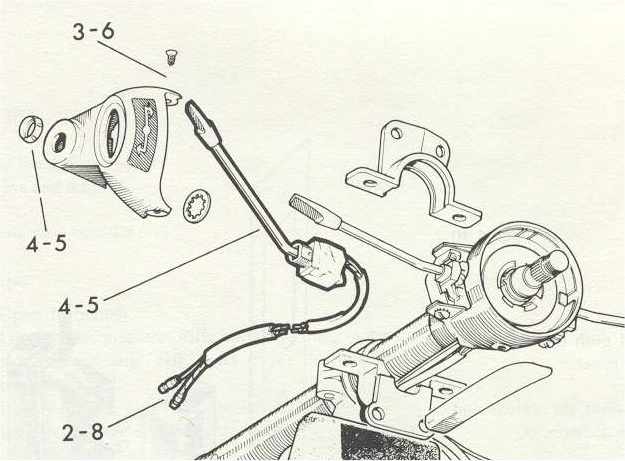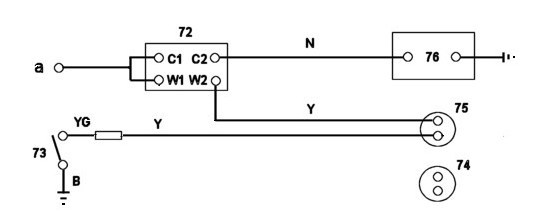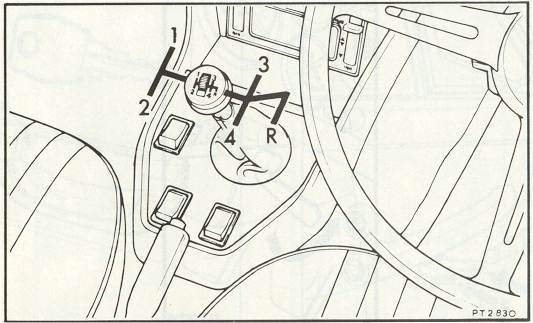
For Ford engined cars, I believe TVR used a stand alone unit mounted behind the transmission. For Triumph engined cars the easiest way is to get a transmission complete with overdrive because a different output shaft is used to mate to the overdrive unit. You also need different transmission mounts, overdrive switch, relay, cut-out switches etc. Nothing very difficult here.
Your overdrive should have the correct speedo driving gear. My first overdrive had the wrong one and the speedometer read 40 mph at 65 mph. To solve this I got a programmable speedometer that I could calibrate against mile markers beside the road, and later against those "YOUR SPEED IS:" radar signs when I found one. (You MUST be the only car moving in your direction in front of the sign - EVERY other car has a much higher radar profile and will washout your signal. That's right-some of those tickets are not yours!)
There are no instructions on how to operate the overdrive, i.e. use the clutch or not
when switching in or out of O.D. People do say it should not be run in reverse.
This is like saying "Do not open hatch while submarine is submerged".
Any distance in
reverse is too much, even six inches. The horrible banging noises will tell you
that you are going to be walking REAL SOON NOW. It happened to me.
My car was equipped with column switch and wiring just like a Tr6.
How can it happen with cut out switches? Did they fail? No. The column switch just
happened to be on, which would not be a problem because the cut out switches were
open since I was not in second, third or fourth gear. The torque of operating the angled
handle of the switch tends to loosen the retaining nut, allowing the switch to rotate
until it contacts the mount for the turn signal switch, grounding one of the
contacts and bypassing the cut out switches. This contact normally is grounded ONLY when one of the cut out switches is
enabled. Interestingly, the illustration in the Bentley Manual seems to show a rubber
cover over the switch contacts. This cover is not shown in the parts manuals
nor is it found on actual switches, Not even NOS switches.

|
| The overdrive switch, bezel and associated parts from the Bentley book. Notice the mythical rubber cover. |

|
|
Tr6 overdrive wiring 1972-1974 USA models.
From the Robert Bentley Tr6 shop manual.
You really need this book. |
| Key To Overdrive Wiring | |
|---|---|
| a | from fuse box |
| b | from fuse box |
| 72 | Overdrive relay |
| 73 | Overdrive column switch |
| 74 | Overdrive gearbox switch - 2nd gear ON |
| 75 | Overdrive gearbox switch - 3rd/4th gear ON |
| 76 | Overdrive soleniod |

|
| Revised overdrive wiring. |
Another interesting fact is that Triumph used a left hand switch for left hand drive
cars where you shift with the right hand, and a right hand switch for RHD cars where you
shift with the left hand. I'm not making this up.
When installing overdrive, use a right hand switch in a LHD car because it's
ergonomically
correct and the left hand switch blocks the wiper switches when overdrive is
not engaged.

|
| The Stag overdrive switch. Image from Triumph Stag owners manual. |
| Speeds in Gears with 3.7 Rear | |||||||||
|---|---|---|---|---|---|---|---|---|---|
| Gear/RPM | 1000 | 2000 | 2500 | 3000 | 3500 | 4000 | 5000 | 5500 | 6000 |
| 1 | 6.5 | 13 | 16 | 20 | 23 | 26 | 33 | 36 | 39 |
| 2 | 9.2 | 18 | 23 | 28 | 32 | 37 | 46 | 51 | 55 |
| 3 | 14 | 28 | 35 | 42 | 49 | 56 | 70 | 77 | 84 |
| 3od | 17.7 | 35 | 44 | 53 | 62 | 70 | 89 | 97 | 106 |
| 4 | 19.8 | 40 | 50 | 59 | 69 | 80 | 99 | 109 | 119 |
| 4od | 24.6 | 49 | 62 | 74 | 86 | 98 | 123 | 135 | 148 |
If you have the normal 3.45 rear end, you will be going about 7% faster in each gear.
Last updated on February 15, 2005.